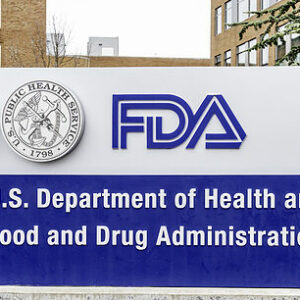September 9 marked the fifth anniversary of the deadline for premarket tobacco applications (PMTAs) for newly deemed tobacco products – largely e-cigarettes – submitted to the U.S. Food and Drug Administration. In that time, despite receiving millions of applications for products used by adults long before the FDA decided to regulate them, the agency has authorized the sale of only 39 products, from just four manufacturers.
The failure lies not only in the FDA’s process, but in the 2009 Family Smoking Prevention and Tobacco Control Act (TCA) itself – a law that has propped up one particular company, preserved cigarette sales, and proven unresponsive to both American small businesses and the goal of tobacco harm reduction. It is long overdue for Congress to correct the mistake of allowing the FDA to control tobacco and harm reduction products.
The TCA was supposed to be a health care victory. It banned flavors other than tobacco and menthol in cigarettes, eliminated sponsorships and promotions, and gave the FDA sweeping authority over all tobacco products. But within the law was an arbitrary date: February 15, 2007. That date determined whether a product would be considered “new” and subject to the burdensome PMTA process, while “old” products could continue through the less rigorous substantial equivalence pathway. Some large tobacco companies endorsed the TCA, while others sounded alarms. Competitors warned that the FDA “is unlikely to approve many new products” and that the TCA “would make it harder to let consumers know there are options available to them.” They were right.
E-cigarettes first appeared in the United States in 2007 and were therefore swept into the “new” category. Seven years after the TCA became law, the FDA formally “deemed” e-cigarettes and other harm reduction products as tobacco in 2016, subjecting them to the TCA’s framework and requiring PMTAs. The agency delayed implementation several times, at one point extending deadlines to 2021 for combustible products and 2022 for non-combustibles like e-cigarettes. Public health groups including the American Academy of Pediatrics and Campaign for Tobacco-Free Kids sued, arguing the delay was unlawful. In 2019, a federal judge vacated the extensions and ordered a new deadline of May 2020. With the COVID-19 pandemic, the court extended the deadline to September 9, 2020.
Between 2019 and 2024, the FDA received more than 26 million applications across e-cigarettes, heated tobacco, and oral nicotine pouches. To date, just 81 products have been authorized for marketing across nine companies. After acquisitions, only seven distinct manufacturers remain. One manufacturer – through its acquisitions and its own products – has secured marketing orders for 36 products, about 44 percent of all PMTA authorizations. This outcome is exactly what critics predicted in 2009: a regulatory system tilted to protect one dominant tobacco company while stifling competition and innovation.
The consequences are severe. In 2023, more than 20 million American adults vaped, yet the FDA has authorized only 39 products for legal sale. Millions of smokers who might otherwise switch to safer alternatives are left without viable options. American businesses – large and small – are strangled by a process that denies them the ability to serve consumer demand. Even companies that once played by the rules have begun releasing non-authorized products, including flavored vapes and nicotine pouches, because the market itself is already dominated by products without FDA authorization. This is not effective public health regulation. It is dysfunction that props up cigarette sales, punishes responsible companies, and drives the bulk of the e-cigarette market into a legal gray area.
Congress can fix this. It could repeal the TCA outright, revoking FDA authority and returning decisions about what products may be sold to the states. At minimum, it could modernize the statute by moving the arbitrary 2007 grandfather date forward – to 2016, when FDA issued its deeming rule, or even 2022 – so products already on the market can qualify through substantial equivalence rather than the impossible PMTA gauntlet.
With 30 million adults still smoking and 20 million already using e-cigarettes, the United States cannot afford to leave smokers trapped with the most dangerous product on the shelf. If the country truly wants a smoke-free future, reforming the FDA’s failed tobacco regulatory system is the only way forward.


